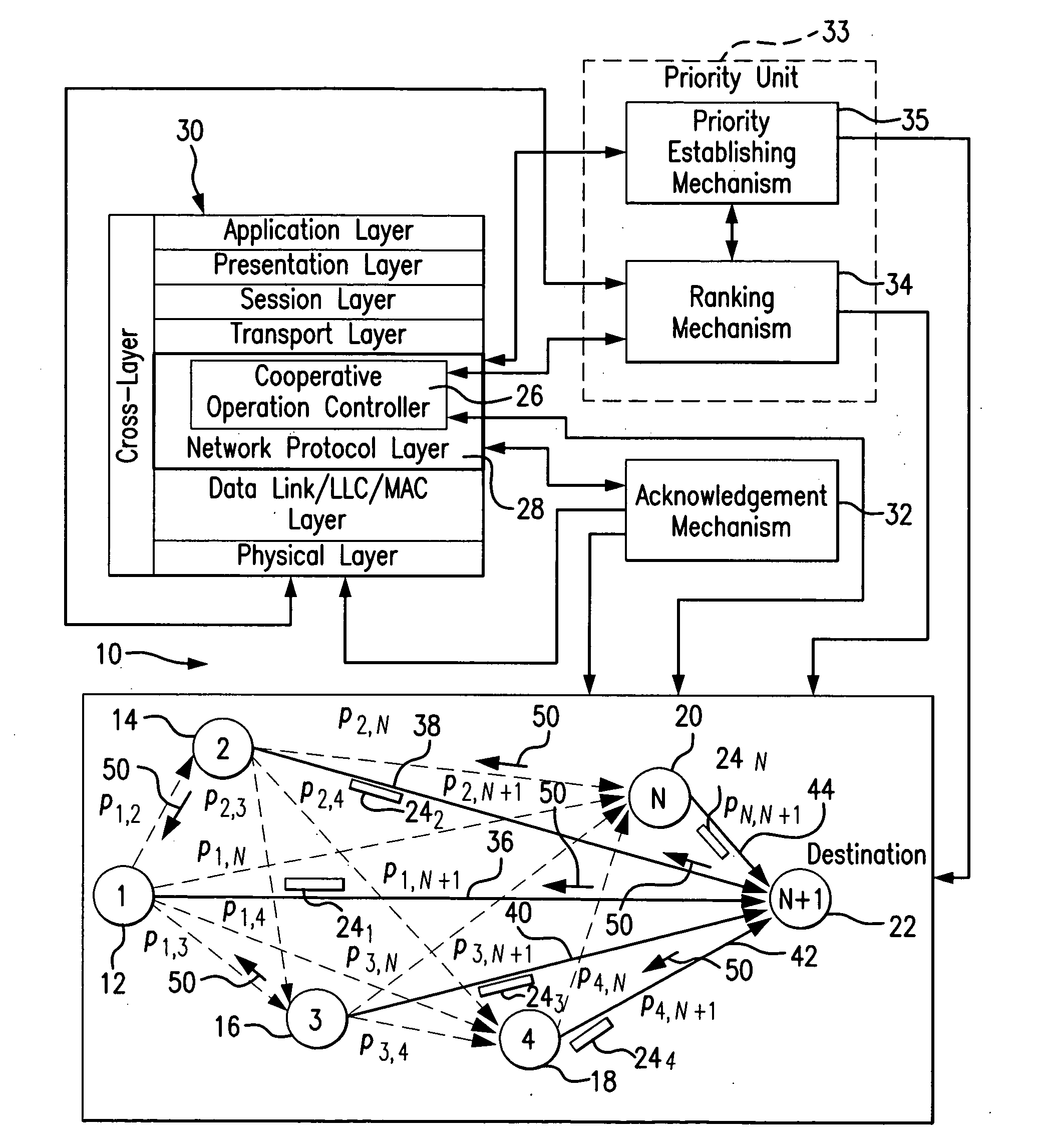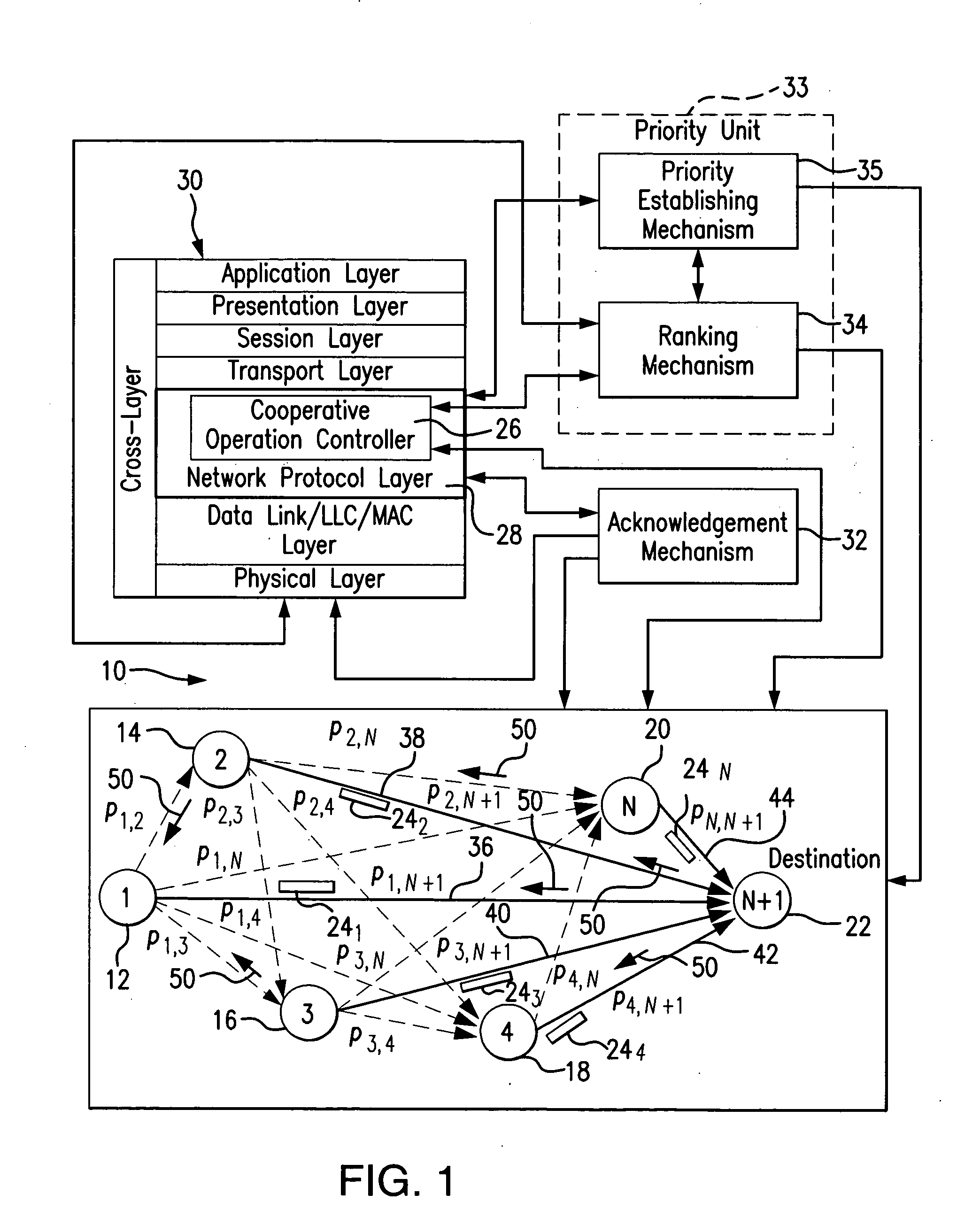Method and system for cooperative transmission in wireless multi-hop networks
a wireless multi-hop network and cooperative transmission technology, applied in the field of wireless networks, can solve problems such as burdening the system with pure relays, and achieve the effect of improving stable throughput and delay performan
- Summary
- Abstract
- Description
- Claims
- Application Information
AI Technical Summary
Benefits of technology
Problems solved by technology
Method used
Image
Examples
Embodiment Construction
[0054]Referring to FIG. 1, a wireless multi-access system 10 of the present invention includes a plurality N of wirelessly interconnected source user nodes 12, 14, 16, 18, and 20, and a destination node 22 to which the source user nodes 12-20 unicast packets 24 generated at the respective source user nodes 12-20. Although only nodes 12, 14, 16, 18, and 20 are shown in FIG. 1, it is to be understood that a larger or smaller number of the source user nodes may participate in the multi-access wireless system 10 of the present invention.
[0055]A Cooperative Scheduling Controller Unit, also referred to herein as a Cooperative Operation Controller 26, is schematically shown in FIG. 1 as being implemented at the Network Protocol Layer 28 of the Open System Interconnection (OSI) reference model 30. It is to be understood that the functions of the Cooperative Operation Controller Unit 26 includes, among others, the coordination of the packets transmission through the wireless network in accor...
PUM
 Login to View More
Login to View More Abstract
Description
Claims
Application Information
 Login to View More
Login to View More - R&D
- Intellectual Property
- Life Sciences
- Materials
- Tech Scout
- Unparalleled Data Quality
- Higher Quality Content
- 60% Fewer Hallucinations
Browse by: Latest US Patents, China's latest patents, Technical Efficacy Thesaurus, Application Domain, Technology Topic, Popular Technical Reports.
© 2025 PatSnap. All rights reserved.Legal|Privacy policy|Modern Slavery Act Transparency Statement|Sitemap|About US| Contact US: help@patsnap.com



